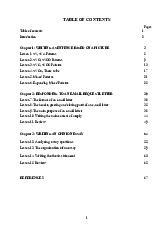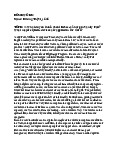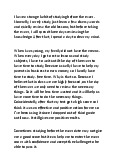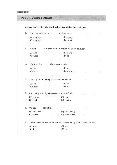

Preview text:
As you know, The urinary system is an organ system that helps the body
remove excess fluids and dissolved substances from the blood
circulation to the external environment.
The urinary system consists of the , kidneys , ureters , and bladder the . urethra
Firstly, let’s learn about the kidney. In normal human, we have two
kidneys, 1 on the right and 1 on the left. they are shaped like peas and
function as a water filtering factory for a city. In addition to filtering the
blood, the kidneys also help regulate pH, volume, pressure, and control levels of and metabolites, horm electrolytes one production
The kidneys are located between vertebrae T12 and L3 and are partially
protected by ribs 11 and 12. The right kidney is pushed down by the
liver, so it is located slightly lower than the left kidney.
In the middle of each kidney there is an indentation forming the renal
hilum - this is the entry and exit point of the ureters, renal arteries, renal
veins, lymphatic vessels, and nerves entering and leaving the kidney.
When we look at the cross section of the kidney, on the outside we will have the
. So we've got the outer layer of the kidney and t renal cortex hen on the inside we have the
and then on the center we have renal medulla the .
renal pelvis The renal medulla is formed from 10-18 renal pyramids
with the base of the pyramid facing the renal cortex, the top of the pyramid (the ) towards the center of t renal papilla he kidney. Renal papilla towards the , the minor calyces m minor calyces erge into the
major calyces to form a funnel towards the renal pelvis.
The nephron is the structural unit of the kidney. There are about 1
million nephrons in each kidney. Each nephron is made up of renal corpuscles and .
renal tubules The renal corpuscle is where blood
filtration begins, it consists of the - very small capillar glomerulus y
networks - and the bowman's capsule.
When blood flows into the glomeruli, water and some solutes such as
sodium will go to the bowman's capsule and become filtrate (also be
called the first unrine.) The first urine after being filtered in the
glomerulus is still rich in nutrients, so it will be reabsorbed in the renal tubules. Renal tubule consists of , the proximal convoluted tubule loop of henle, distal convoluted tubule conllection duct and .
Here will occur the process of reabsorption and excretion of some
substances to turn the filtrate into urine.
On average, about 170-180 liters of first urine are produced every day,
but after reabsorption, only about 1-2 liters of urine are actually formed.
Millions of urine-forming nephrons flow into the minor calyces, then to
the major calyces, and finally into the renal pelvis. From there it goes
down the ureter and is stored in the bladder.
In the kidney, some substances are reabsorbed back into the blood, the
rest are filtered and taken to the bladder to be excreted.
The kidneys of an adult filter about 150 liters of blood per day. If the
blood in the body is assumed to be 5 liters, the entire blood volume will
be filtered 30 times per day. The kidneys thus receive about a quarter of the output. cardiac




